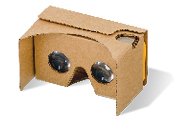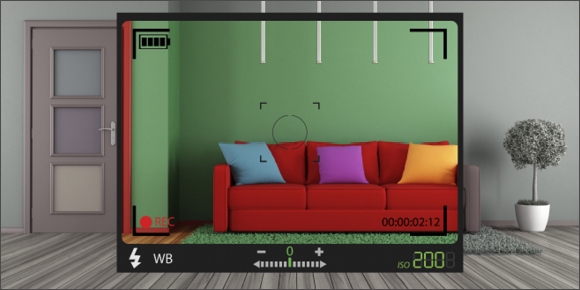Professional-grade digital visuals help potential buyers find and fall in love with your listings.
By Donna Shryer
As a REALTOR®, you know the importance of loading up the internet with listing photographs and videos. But is your pictorial journey through every property ZMOT-worthy?
ZMOT stands for Zero Moment of Truth, a term coined by Google in 2011 that explains how today’s shoppers shop, starting with the “zero moment,” or the precise moment they have a need to be fulfilled. To put it simply, ZMOT is pre-shopping—the hours of online research before deciding whether to consider purchasing a product or service. These digital fact-finding missions are typically a shopper’s first touch point with a desired purchase—whether it’s a protein bar, wedding planner, mattress or home. Engaging visuals and text trigger the next pre-shopping phase, which has the shopper sharing those captivating links with friends, family and social media contacts—along with a shout out for feedback. Google estimates that 88 percent of U.S. customers begin the buying process at this Zero Moment of Truth.
It’s no different for homebuyers. According to the National Association of REALTORS®, 42 percent of shoppers begin the home-buying process by looking online at properties for sale, while only 14 percent of buyers first contact a real estate agent. Of these pre-shoppers, 87 percent find photos, videos, slide shows and 3-D virtual tours very useful.
“The internet has fundamentally changed how people look for property,” says Laurent Perez, director at the Barcelona Diagonal office of Fine & Country, a global real estate brand specializing in providing a premium service in the upper-quartile of the market. “Now more than ever, high-quality visuals and opportunities to virtually interact with a property make a huge difference as to whether or not your listing makes a buyer’s shortlist,” Perez adds.
And that shortlist matters. It’s what’s shared with friends and family, and winds up representing the homes that buyers actually go see and make offers on. It is often at this point that agents are contacted.
{gallery}digital visuals{/gallery}
Be Seen
You can forget about making anyone’s shortlist if search engines can’t “see” you and buyers can’t research your properties. To improve your search results, get your visual presentations onto the internet as much as possible.
To help search engines see his property presentations and rank them higher, Glenn Hanon, CRS, associate vice president, Wisconsin-based Shorewest REALTORS®, posts his listings’ visual presentations on his company website, his personal YouTube channel and every pertinent social media site, such as Facebook, Linkedin, Twitter, Pinterest, Vimeo and Instagram. Hanon also uploads photos and videos to MLS, which are pulled into other sites, including Zillow, Trulia and Realtor.com.
While photography remains one of a REALTOR®’s strongest digital sales tools, Perez says that video postings are growing in importance, especially for SEO: “Google loves video! I’ve seen recent studies reporting that search-engine-optimized videos are more likely than text alone to rank higher in Google results. And because Google owns YouTube, it sees this particular video-sharing site even faster.” YouTube is also the second-largest search engine after Google, with 3 billion searches a month and 4 billion videos viewed each day.
Trending Now
To connect with a potential buyer during the pre-shopping phase, the overarching goal is to put out a metaphorical welcome mat that invites viewers inside, Hanon says. “You want viewers to feel emotionally connected to the property and say, ‘I see myself living here!’”
Several emerging digital marketing trends can give your visual presentations that extra snap, crackle and pop that tugs at a buyer’s emotions.
Digital 3-D Virtual Tours:
Based on home-mapping software, a 3-D, interactive, web-based tour allows home shoppers to virtually walk through a property in a way that’s similar to how they would wander about a home in person. Online shoppers can probe corners, angles and features inside a property’s every room. They can gaze out windows, inspect kitchen appliances and virtually experience the floor plan’s flow. The current frontrunners in interactive, digital 3-D walk-throughs include Matterport and iGuide.
Amit Bhuta, CRS, estate agent with ONE Sotheby’s International Realty in Coral Gables, Florida, relies on Matterport. “The experience is very realistic, which helps international and out-of-town buyers pull together a shortlist without having to make multiple visits to a city,” Bhuta explains. Online 3-D tours are equally valuable when a buyer’s family and friends live out of town, Bhuta says.
Palos Verdes, California-based Walkthrough Productions, a digital marketing firm that specializes in real estate, uses iGuide, and a realistic experience is just the beginning, says Brenna Humphreys, Walkthrough Productions’ co-founder and creative director. “Because home-mapping software is web-based, agents can capture valuable data. You can see how many people click on a virtual tour and how long they interact with it. Our analytics tell us that iGuide 3-D virtual tours are sticky in that people stay longer with an interactive floor plan than a slide show.”
Drones:
While Amazon experiments with 30-minute delivery via drone drop-off, REALTORS® are also testing the technology. Drones, or unmanned aerial vehicles (UAVs), take dramatic aerial videos and photographs of a property’s surrounding grounds, which is a strong selling point when the home sits on vast acreage with incredible views.
The Federal Aviation Administration’s Field Guide outlines rules and regulations for commercial drone operations, including the fact that drone operators must have a permit for commercial use.
Brian Teyssier, CRS, an agent with RE/MAX Advanced REALTORS® in Pittsburgh, is a drone owner, so he leans on the technology as often as possible, which includes aerial shots of luxury estates as well as moderately priced homes nestled within charming neighborhoods. “I’ll take aerial shots of the surrounding community, like a neighborhood park, a quaint downtown shopping area, a nearby golf course or convenient expressway access. The goal here is to sell the neighborhood—a lifestyle—rather than an estate. Millennials in particular love this view.”
A Flash of Passion:
There was a time when “luxury home” meant size—lots of square footage. “That’s when photographers headed to a room’s four corners and snapped away. From that angle, a room looks very big,” says Barry Rustin, an architectural photographer based in Chicago.
While home size remains a selling feature, The New Rules of Luxury Living, a white paper published by Luxury Portfolio International, addresses today’s high-end homebuyer’s passion for valuable collections. Rustin says that a property’s online presentation should include close-up shots that show where a prized collection can comfortably live. For example, Rustin will photograph an enormous painting on a living room wall. “I’m selling the idea that this is a home for a serious art collector, with wall space for paintings and niches for sculptures,” Rustin says.
Expanding on this point, you want to look beyond collections and spotlight property features that complement a personal lifestyle. For instance, when a home is environmentally-friendly, quality products that protect our planet’s ecosystem need to be showcased. Aesthetically pleasing and superbly constructed solar panels, geothermal systems, rainwater collection systems and reclaimed wood beams, wood flooring and doors may not make for the most romantic visuals, but in the eyes of a specific buyer, you’ve just increased the home’s value—and possibly the asking price.
Tech-savvy buyers want to see how they can simply touch their smartphone and lock doors, manage the home’s climate, switch lights on and off, and control the alarm system—all while away on vacation. Again, they’re not the most charming images, but hugely pertinent. Icontrol Networks, which specializes in the connected home platform, states in its 2015 State of the Smart Home Report that 25 percent of Americans moving to a new property seek a smart home, with that figure expected to rise.
Hitting the Target
Bowing to creative expression as well as market demand, the best practices to achieve quality property visuals come with some wiggle room. One best practice, however, is nonnegotiable. “You need professional-grade equipment,” says John Daly, CRS, agent with Coldwell Banker Grass Roots Realty in Grass Valley, California. As both a professional photographer and REALTOR®, Daly explains that “smartphones or inexpensive point-and-shoots won’t do it. You need a good camera, a wide-angle lens—which is no match for a smartphone’s panoramic app—a zoom lens and tripod for evening and/or low-light shots.”
At the end of the day, Daly adds, it doesn’t matter if you hire professional photographers and videographers or do it yourself. What matters is that whoever takes the shots has the right equipment, knows how to use the equipment and has an artist’s eye.
Regardless of who creates your visual presentations, here are several key tips to create stunning images.
See the Light:
“Lighting is so important,” Humphreys says. “For exterior shots, one of the best times to shoot is at twilight—that golden hour just before sunset.”
To enhance the romance, Daly suggests turning on all the lights inside the home and then hosing down the walkways, which will reflect light. “Shoot the picture with a slightly longer exposure,” Daly adds. “It makes the home look warm and inviting.”
Moving indoors, Humphreys says that turning on interior lights—with the exception of fluorescents—makes it feel like someone’s home. “Without the lights on, rooms tend to look dead and cold.”
Andre Alvarez, videographer and photographer with A3 Media LLC in Miami, often partners with Bhuta to shoot luxury properties. “I rely on natural light as much as possible, but when that’s not an option, adjusting my camera’s exposure and white balance to present the subject as it would look if illuminated with natural light can make all the difference and save post-production editing time.”
Another approach is to add or subtract artificial lighting. “I use flash lighting to supplement daylight and tungsten lighting, which is similar to lamp light, to accent something—like a floor or cabinet’s beautiful wood grain,” Rustin says.
While it’s impossible to schedule shoots around perfect weather that comes with perfect natural lighting, Bhuta says the Dark Sky app, created for the iPhone and iPad, is a reliable safety net. Dark Sky uses state-of-the-art technology to predict weather conditions for an exact location. “Having this data saves time and money since I don’t have to reschedule as many shoots due to inclement weather,” Bhuta says.
Set the Stage:
Home staging has always been important, but with millennials now a dominant force in the housing market, Carl Medford, CRS, REALTOR® with Keller Williams Benchmark Properties in Fremont, California, believes it’s more important than ever. “We’ll remove old furniture, put in newer, contemporary furniture and stage everything to look as move-in-ready as possible. We do this because millennials generally want to unpack boxes and be done with it,” says Medford, who owns his own staging company.
In addition to adding or subtracting furniture, Hanon often rearranges furniture. “Sometimes people arrange a room for the convenience of watching TV, but it’s not the best arrangement for that room. So I might suggest ditching the TV and going for a more appealing furniture layout.”
The seller has staging work to do, too. “To prep for a shoot, we give homeowners a must-do list—and rule No. 1 is to follow the list,” Hanon says. “No amount of staging can be successful with unmade beds, wet towels hanging in the bathroom, clutter obscuring surfaces and pets running loose.”
It’s About Time:
Producing the best possible real estate photography and video presentations can’t be done in a day. In fact, Daly says that realistically, great visuals can require several days and multiple shoots. “First you shoot the home with the sun behind you. But you can’t just walk around to the property’s other side because now you’re facing the sun and the direct light will blow out your pictures. You either come back at dusk, when the sun is at another angle, or you come back the next day.”
Scheduling plenty of time for photos and videos also delivers the quantity you need to achieve quality. In other words, move around a room, shoot various angles, try different lighting techniques and give yourself the luxury of choices—so you never need to say, “This photo will just have to do.” For example, Daly may take nearly 100 digital photos in order to score the 30 shots MLS allows REALTORS® to upload per listing. Hanon says it easily takes two hours of raw footage to create a truly engaging 90-second video.
A deep image pool also helps break out of any cookie-cutter presentations, Bhuta says. “REALTORS® sometimes make the mistake of leading with the front of the house, when actually many properties’ best feature isn’t the front yard at all.” But limited photos produced under tight time restraints can cause a home’s “best feature” to slip through the cracks, Bhuta adds.
Polish Off the Project:
How you manipulate visuals post-production can be a REALTOR®’s best or worst friend. The key is that post-production tools should enhance images but never be used in place of talent. Rustin explains: “When interviewing professional photographers, be leery of that classic line: “I’ll fix it in Photoshop.” That’s inexperience or laziness talking.”
Another post-production faux pas is over-editing, Teyssier says. “Making the sky super blue or over-saturating the grass can turn a beautiful photo into a caricature.”
GOOGLE EYES
 Google Cardboard is available but somewhat slow to create a true global industrywide buzz. But according to Carl Medford, CRS, REALTOR® with Keller Williams Benchmark Properties in Fremont, California, it’s an idea ready to burst wide open.
Google Cardboard is available but somewhat slow to create a true global industrywide buzz. But according to Carl Medford, CRS, REALTOR® with Keller Williams Benchmark Properties in Fremont, California, it’s an idea ready to burst wide open.
Google Cardboard is much like the exorbitantly high-priced virtual reality headsets that serious gamers use—minus the exorbitant price. In Google’s case, the headset is indeed made from a cardboard cutout and works with a pair of 40mm focal distance lenses, a magnet, some Velcro, a rubber band and an Android or iPhone.
Place the smartphone in its designated spot and by using compatible apps, the viewer is immersed in a 3-D experience that’s reportedly comparable in many ways to more expensive hardware like the Oculus Rift.
“When you move your head up, down and around, it’s a 360-spherical video experience,” Medford says. “I’d keep my eyes and ears open. I predict it’s the next serious trend for REALTORS®.”
It all comes down to truth in advertising, Medford advises, and as a REALTOR® in the San Francisco Bay Area, he knows what he’s talking about. “We have a serious drought, so many high-end homes have dead landscaping and color- correcting the lawn is misleading. However, we may put a sign on the lawn that says ‘Brown is the new green’ and photograph that.”
When correcting color, Hanon says that staying seasonally correct is essential. “If we boost the landscaping when it’s winter, potential buyers might ask, ‘Why are they showing a summer photo? How long has this house been on the market? What’s wrong with it?’”
What you can ethically do, Rustin says, is correct situations that will be fixed once the home is officially on the market. “Let’s say you notice a tile missing from the kitchen counter—but the home seller assures you that it’s on order and will be repaired in a week. In this situation, it’s fine to add the tile using Photoshop.”
And Daly won’t hesitate to take a photo into Adobe Photoshop Lightroom to tweak clarity, vibrancy, saturation and shadows. “I prefer shooting with curtains open and light streaming in. Then I balance the photograph in Lightroom.”
The Big Pay Off
So does digital marketing bring the REALTOR® a strong return on investment (ROI)? “I do not think we can statistically come up with an ROI for videos, etc. There are many factors that bring buyers to see a property,” Daly says. “I will say that good photography, video and aerial drone work equally contribute to more showings, quicker sales and often higher prices for the seller. And when a client comes to a house with a positive attitude—due to the images they’ve seen—they are much more open to liking the house and buying it,” Daly adds.
Here are a few ways to gauge your listings’ visual presentations and estimate if they’re producing a positive ROI.
More Efficient Showings:
Quality online photos, videos and 3-D virtual tours tend to increase the number of serious showings—shoppers who want to see the home versus “lookie loos” out for a leisurely afternoon of house browsing. “With ZMOT, today’s buyers are less likely to visit a home simply because it’s active. They visit only if what they see online resonates with them and compels them to make the effort to show up,” Medford says.
More Listings:
Bhuta feels that posting quality visual presentations for his listings helps establish his reputation with future sellers and buyers. “I’ve had clients come to me and talk about a listing video they saw two years ago. They weren’t selling then, but they are now! And they remember my video, which brought them straight to me. So my investment in online digital marketing materials helps sell a property, but also promotes my brand for future listings.”
Increased Website Traffic:
While Teyssier hasn’t crunched the numbers, he definitely thinks that high-quality photos increase online views. “And I think videos get more views than photographs,” he adds. A study conducted by the international listing website Domain.com supports Teyssier’s hunch: Real estate listings with videos receive 403 percent more inquiries than those without videos.
Higher Closing Prices:
“The better a property shows online, the greater the chance of multiple offers,” Medford says. Multiple offers can ignite a bidding war, which can result in a higher closing price. The trigger for this positive action often begins with quality online photographs and videos. A survey by VHT found that professional online photographs increased a buyer’s perceived value of a listing by 11.5 percent when compared to listings with descriptions only. Adding an online video tour of the property increased perceived value by 6 percent.
As for Hanon, he doesn’t look at ROI. “We do videos and still photography because we’re working for the seller and we want the most attention possible for their home. It’s a business cost just like any other. Promoting the seller’s home and making them happy with a sold sign is my ROI. In that way, our payback is huge.”
Stay Focused
When it comes to producing a video that packs a punch, there are a few general rules—although when or if called for, there remains space for artistic expression.
- Invest in a tripod. Like so many high-tech devices, video cameras are decreasing in size, which makes them lighter and more difficult to hold steady.
- Actors can add interest—just make sure these professionals do not distract viewers. The home has to be the star. One often-used and largely successful ploy is to film actors moving from room to room, which helps the viewer transition as well.
- Most experts recommend turning audio off while filming and dubbing in sound later. This gives you time to adapt the script to your final edit and also increases sound quality, since your footsteps, breathing and the neighbors barking dog won’t steal the viewers attention. Adding audio post-production also eliminates the echo that can occur in homes with high ceilings.
- Zoom in on features and amenities that the listing does not emphasize. For example, rehashing the number of bedrooms, bathrooms, square footage and tax stats is wasting valuable time. Instead, open cabinet drawers to illustrate their soft close, or if the home has a high-end air conditioning unit particularly for those with allergies, feature that.
- Generally speaking, your video should come in around one or two minutes max, although final length can be expanded if there’s enough to feature. Once beyond two minutes, a second objective opinion can be invaluable.
Download a checklist you can share with your sellers to help them prepare their home for photos or video.








